Wonderful Russia #02 / Eastern treatment plant: as bequeathed to comrade Stalin
Once again I will tell you about the place, located in the shadow of a known object. The number one task in the construction of the Moscow canal was delivering water from the Volga to Moscow. Built then canal was the greatest construction of the Soviet Union. Now some praise this building, others remind about the thousands of dead prisoners. And those and others believe the channel is a very important building.
On the other hand they both do not say that in addition to known nasal canal Moscow-Volga; it was built 28 miles of canal. And not in the North and North-East and East. And it was all for a good cause - the city's water supply. It is to this canal and the structures on it we see today.

If you look at the map North of the capital, you will see three large reservoirs: Pyalovskie, Uchinskaya and Pestovo. The first two are open to all, and the third is completely closed still. Open and closed Uchinskaya pestovskogo reservoir divides this mound where we are.

Here begins closed from prying eyes the water supply system. We are situated in Pestovskiy the dam near the building of the spillway.
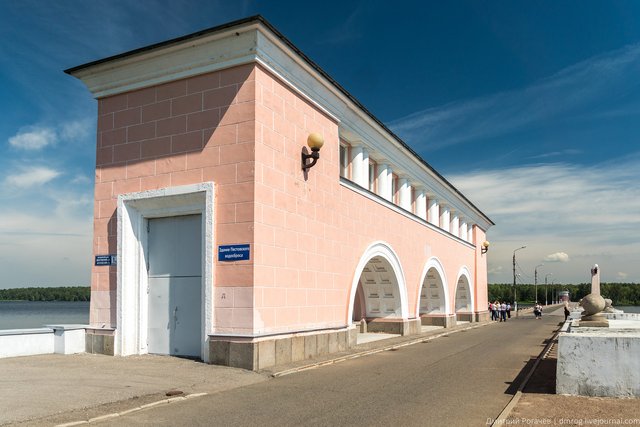
Second podolny dam separates Pyalovskie vodohranilishe from uchinskaya.
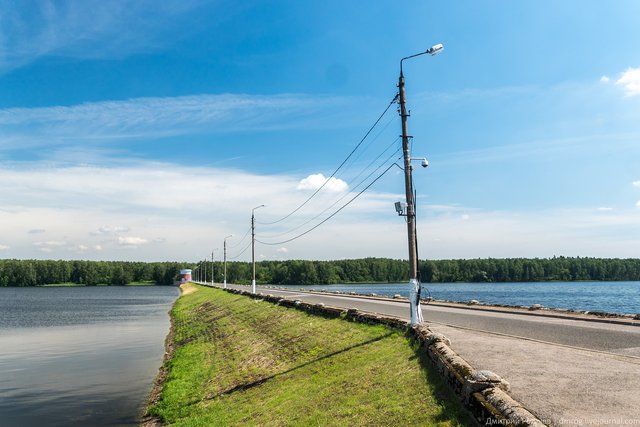
The third dam on the distant horizon, where the city of Pushkino. It's called Akulovskaya and together with a small hydroelectric power station regulates the water level, if necessary, dumping water into the river Teach.
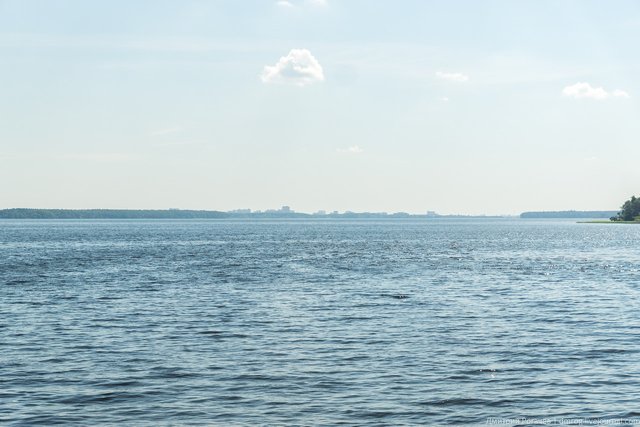
If you look at the construction of the Moscow canal, you can find options that were supposed to have water in Moscow across the North-East near the present town of Mytishchi.
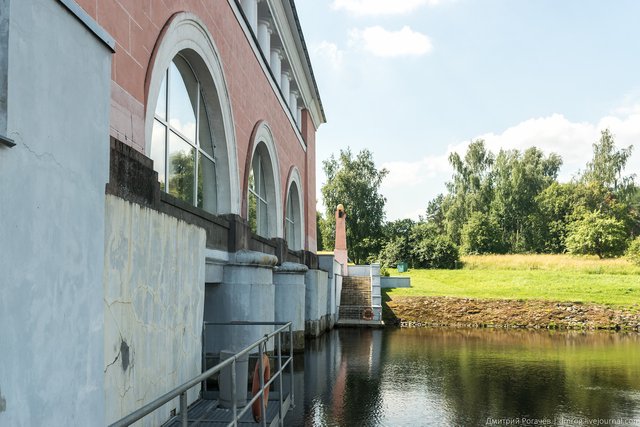
The final project involves the construction of the East water supply canal, which was to end in the southern port of Moscow. The construction of the first phase was completed along with the channel name of Moscow, dalneishee construction has not begun.
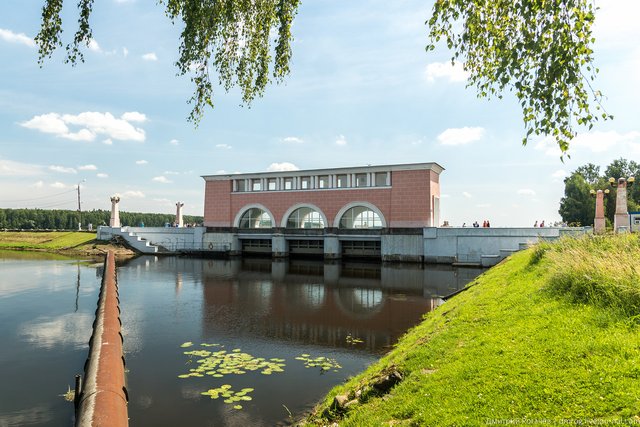
Near the village of akulovo, near the town of Pushkino. located not only Akulovskaya dam of the same GES, but GES one listvyanskiy.

The water passing through Listvyanskaya HPP, falls into the water going to the Eastern treatment plant. 28 kilometrov, part of which takes place in the pipes. Control system of water level, water flow.
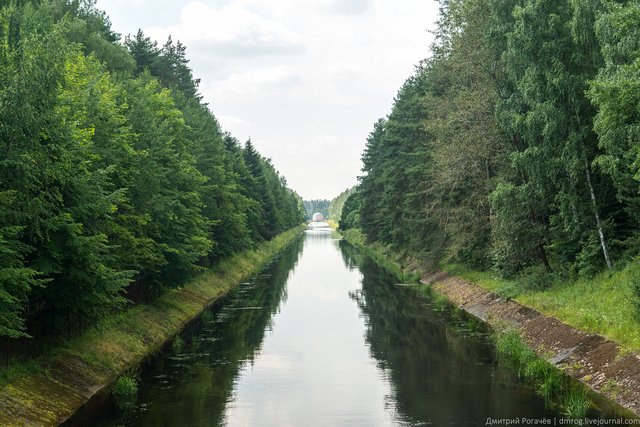
By the way, did you know that the small village of akulovo near the station is Moscow? Employees of the station, living here full Muscovites.

Listvyanskaya HPP has a capacity of only 0.3 MW. Project - 0,7 MW.
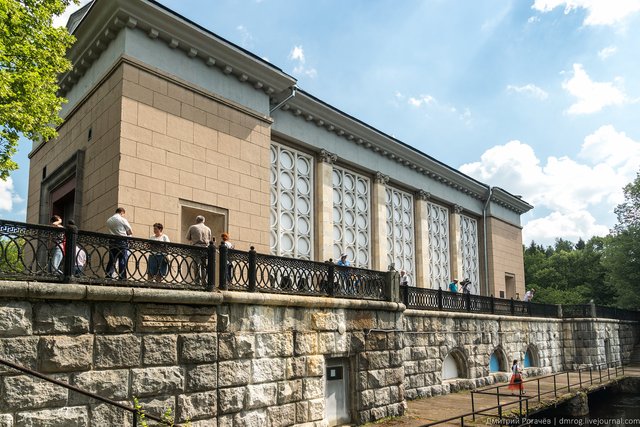
Inside equipment looks quite modest, but for smaller needs it is enough.

All the equipment fits easily in a few frames, and the internal dimensions of the building do not compare with many other similar structures.
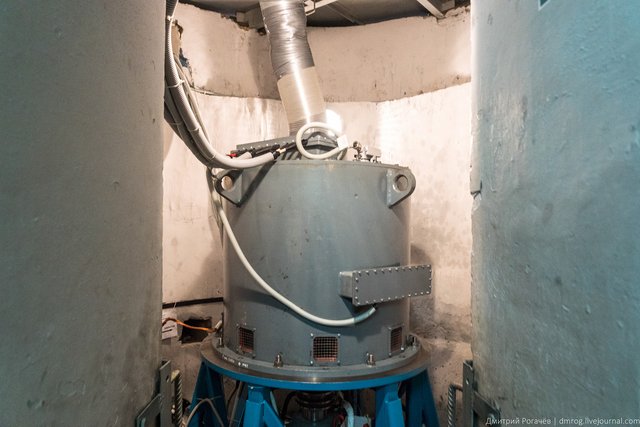
Simply, modestly, but very important for consumer water.

After 28 kilometers of water enters the Eastern water treatment station. We are on the water intake site.
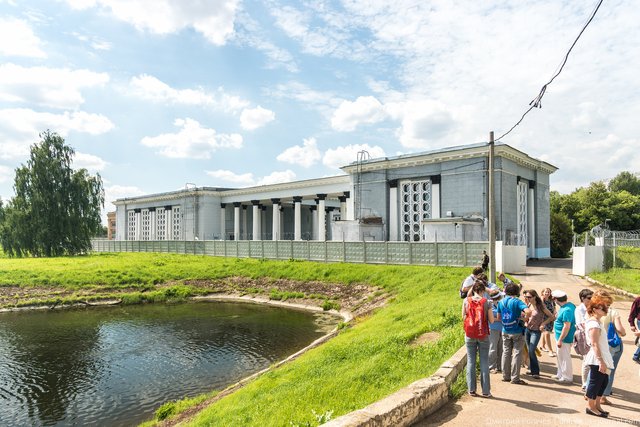
Built and introduced into operation on 16 July 1937, the station was named Stalin. Typical Stalinist architecture with lots of columns and not the industrial design of the building make the building one of the most beautiful in the area.

Once the surrounding area were closed. It also just doesn't fit, but another high-rise district Balashikha with this construction and are not even close in beauty and quality.

Meanwhile, inside the company has kept items of the past. Station ceased to be called Stalinist in 1961.
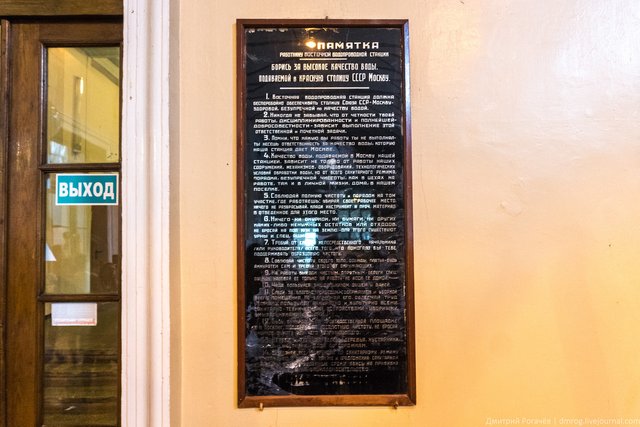
First, the water enters the bucket, to remove which it is possible only from the air.
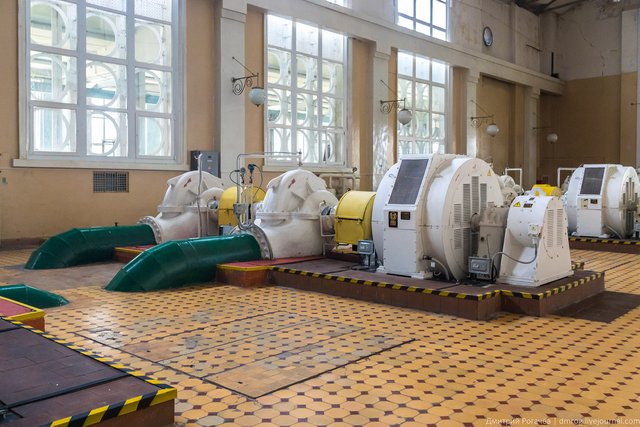
In the inlet, the incoming water is first filtered on coarse lattices, and later on a drum rotating grids.
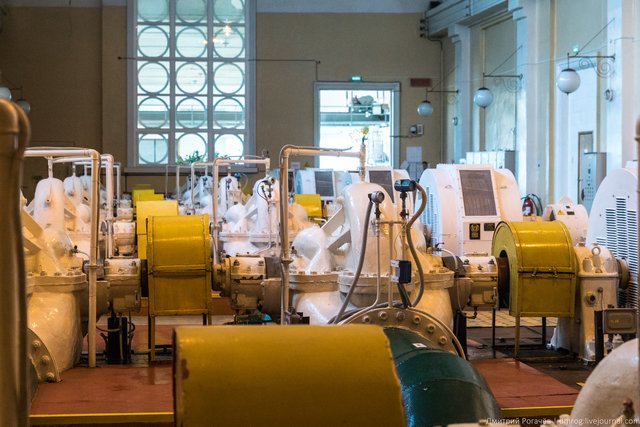
Water gets into blue treatment facilities with units pumping station of the first ascent.

Since the days of Joseph Stalin, much time has passed. The equipment is much more modern, and all the data is automatically transmitted to the control room.

Compared to some other buildings I can call it more quiet.

Following the construction of the mixer, in which water is mixed with the reagents.

In 2010, the station appeared the sludge treatment system that eliminates the problem of disposal of effluents.
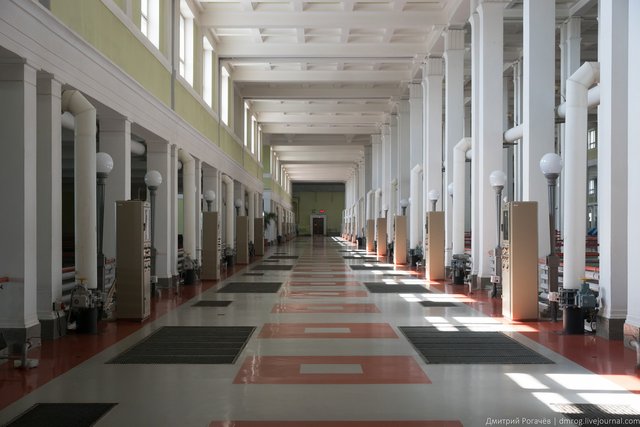
In the end I will show the large and spacious building of the entire system.

Room filters - a huge building. The plant has about 70 water filters, each of which is equipped with a system of air assisted flushing.
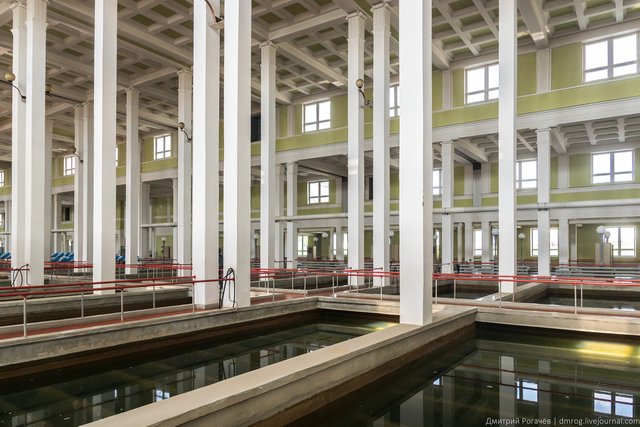
Then the water is sent through pipes to homes.
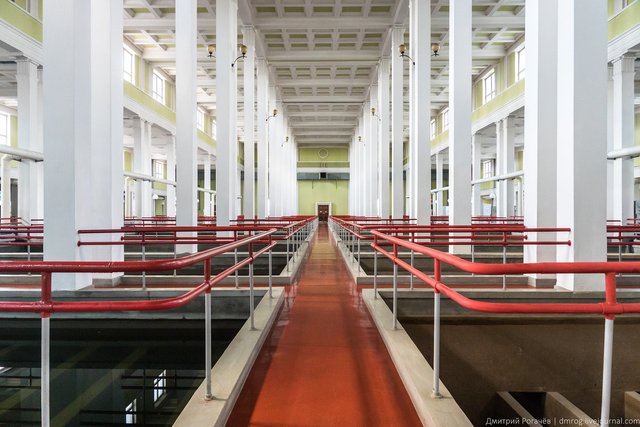
That's all for now!
Thank you for your attention! Stay tuned!
cooperation | Vkontakte | Facebook | YouTube | Instagram | Google+ | Twitter | | voice | Steemit